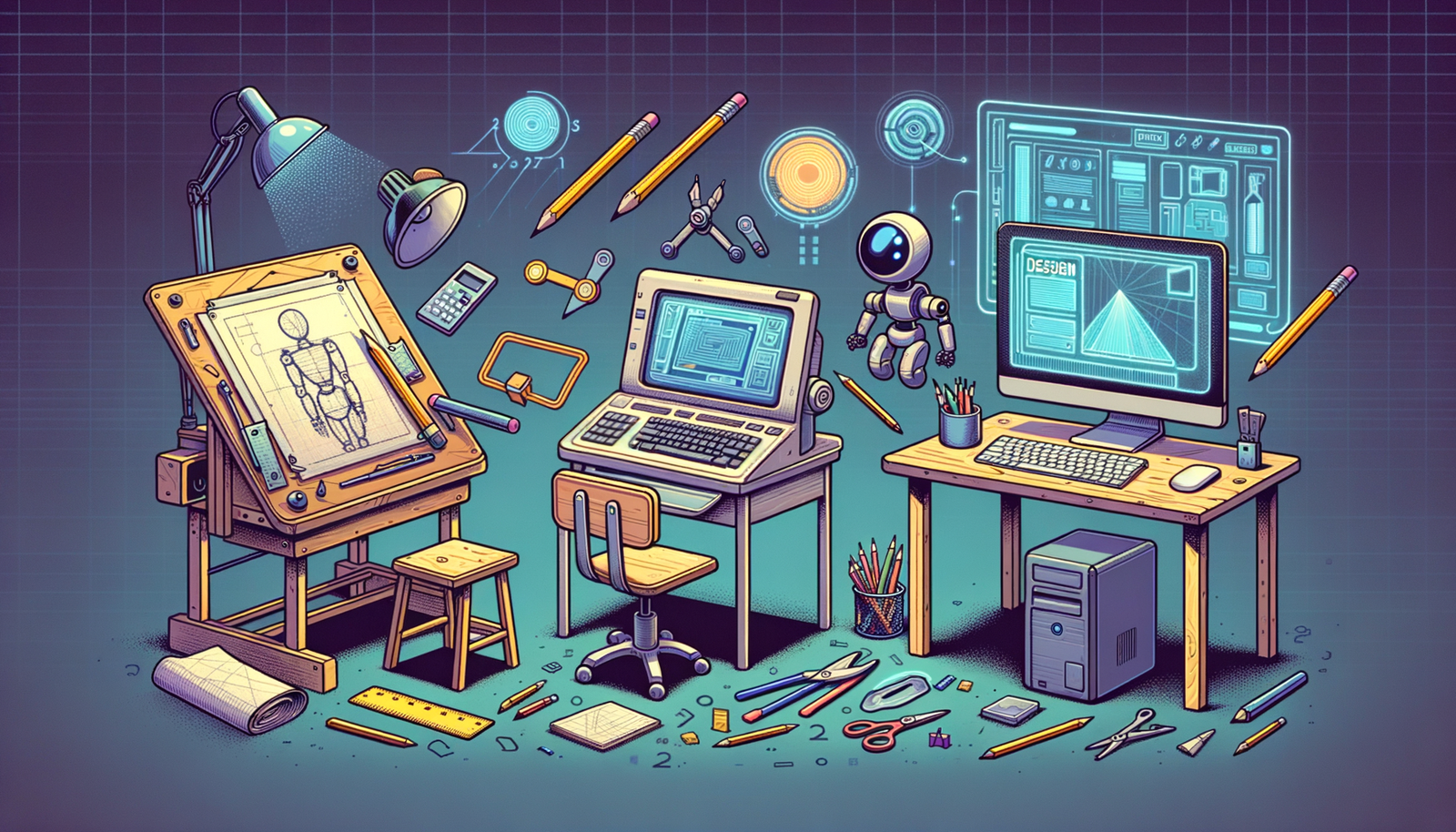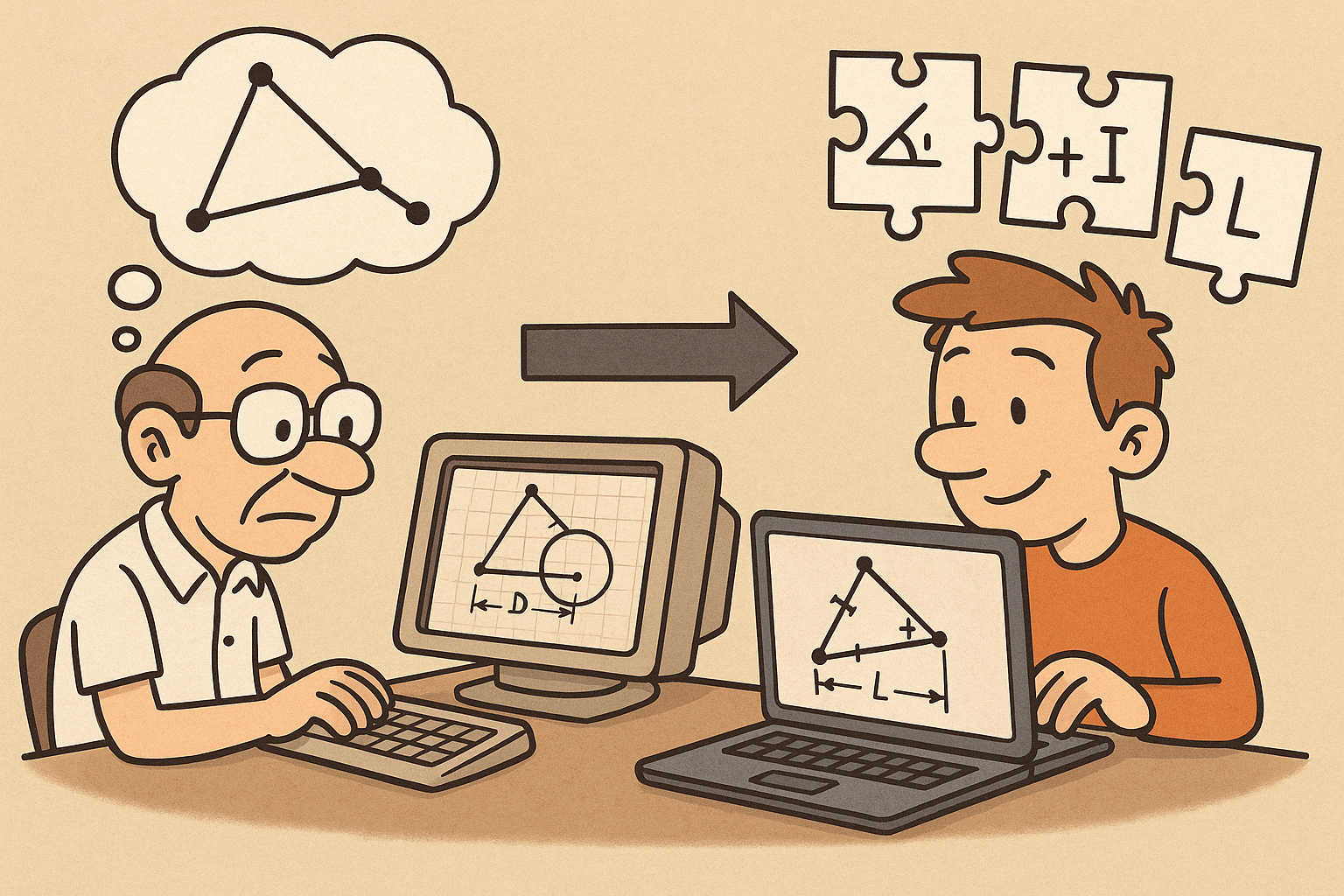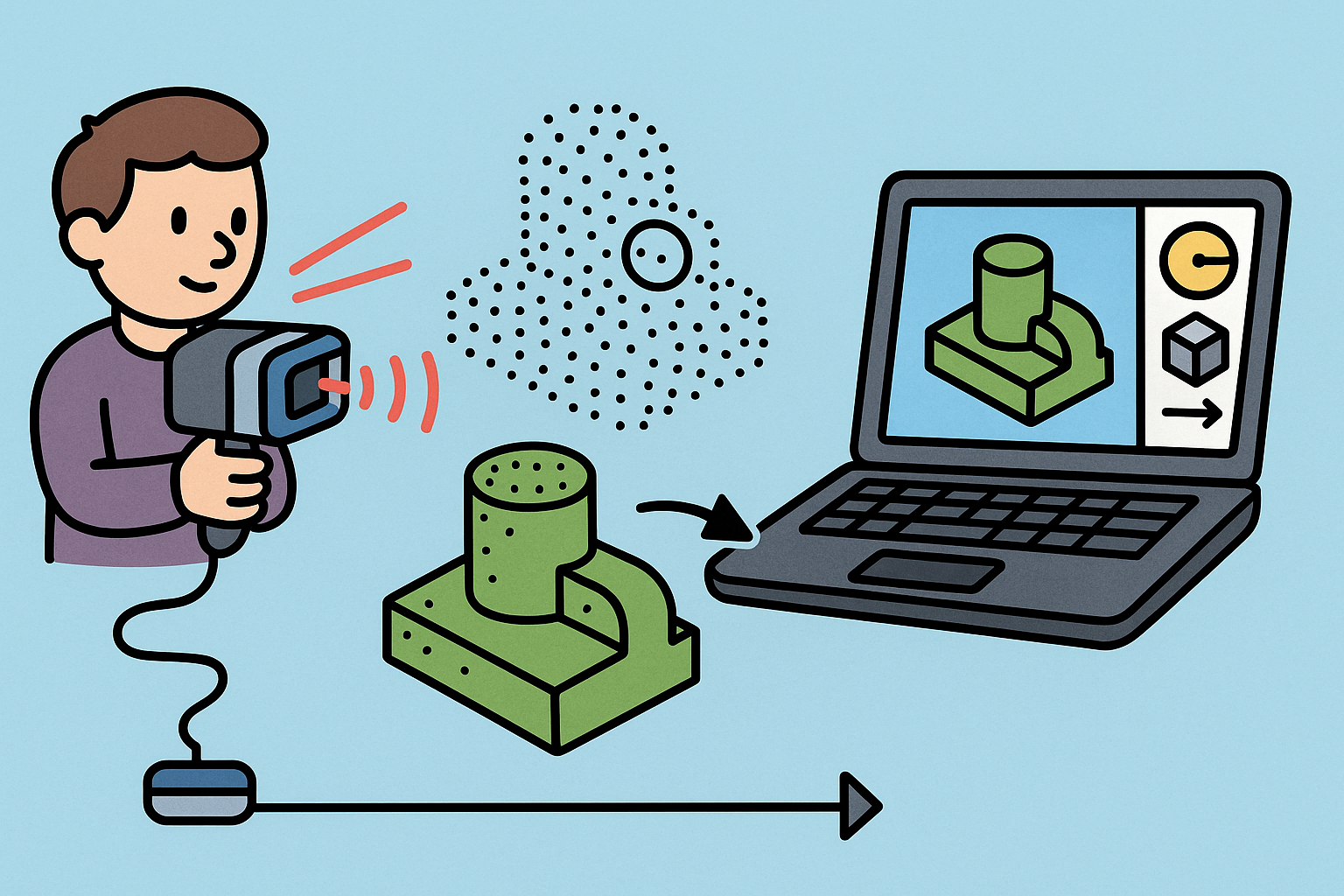Your Cart is Empty
Customer Testimonials
-
"Great customer service. The folks at Novedge were super helpful in navigating a somewhat complicated order including software upgrades and serial numbers in various stages of inactivity. They were friendly and helpful throughout the process.."
Ruben Ruckmark
"Quick & very helpful. We have been using Novedge for years and are very happy with their quick service when we need to make a purchase and excellent support resolving any issues."
Will Woodson
"Scott is the best. He reminds me about subscriptions dates, guides me in the correct direction for updates. He always responds promptly to me. He is literally the reason I continue to work with Novedge and will do so in the future."
Edward Mchugh
"Calvin Lok is “the man”. After my purchase of Sketchup 2021, he called me and provided step-by-step instructions to ease me through difficulties I was having with the setup of my new software."
Mike Borzage
Design Software History: The Evolution of Design Automation: From Sketchpad to AI-Driven Tools
September 30, 2024 10 min read


Introduction to Design Automation
Design automation has emerged as a cornerstone in the engineering and manufacturing sectors, fundamentally transforming how products are conceptualized, developed, and brought to market. It refers to the use of advanced computer systems and software to automate complex design tasks, thereby enhancing efficiency and reducing the potential for human error. In an increasingly competitive global market, the importance of design automation cannot be overstated. It enables companies to accelerate product development cycles, improve precision in design, and foster innovation by allowing engineers to focus on creative problem-solving rather than repetitive tasks. The integration of design automation into engineering practices marks a significant shift from traditional methods, underscoring the industry's evolution towards more sophisticated and efficient processes.
Historically, the design process was a labor-intensive endeavor, heavily reliant on manual drafting and physical prototyping. Engineers and designers painstakingly created detailed blueprints by hand, using tools such as compasses, protractors, and drafting tables. This manual approach was not only time-consuming but also prone to inaccuracies and inconsistencies. Revisions required redrawing entire sections, leading to significant delays and increased costs. As industries expanded and products became more complex, the limitations of manual design methods became increasingly evident. The need to manage larger volumes of data, ensure greater precision, and reduce lead times highlighted the necessity for more efficient and reliable design processes. This realization set the stage for the advent of design automation, which sought to address these challenges by leveraging technological advancements to streamline and enhance the design workflow.
Several key factors have driven the evolution of design automation tools over the decades. Efficiency has been a primary motivator, as companies strive to shorten product development cycles to maintain a competitive edge. The ability to produce designs rapidly and iterate quickly on concepts is invaluable in markets where consumer demands and technological advancements evolve rapidly. Precision is another critical factor; as products become more complex, the tolerances for error diminish. Automated design tools reduce the risk of human error and ensure that designs adhere strictly to specified parameters. Innovation plays a significant role as well; advanced design tools enable engineers to explore new concepts and push the boundaries of what is possible. The convergence of these factors has propelled the development of increasingly sophisticated design automation tools, fundamentally reshaping the engineering and manufacturing landscapes.
Early Innovations in Design Automation
The genesis of design automation can be traced back to the 1960s, a period marked by significant technological advancements and a growing interest in utilizing computers for more than just calculations. One of the most pivotal developments during this era was the creation of Sketchpad by Dr. Ivan Sutherland in 1963. As part of his doctoral thesis at the Massachusetts Institute of Technology (MIT), Sutherland introduced Sketchpad as the first computer-aided design (CAD) system. This groundbreaking software allowed users to interact with a computer graphically, manipulating objects directly on a screen using a light pen. It was a revolutionary concept that demonstrated the potential of computers in visualizing and manipulating complex geometric data.
Sketchpad's influence extended far beyond its immediate functionality. It introduced principles that would become foundational in the field of computer graphics and design automation, such as object-oriented programming and the use of constraints to define relationships between geometric entities. By allowing for the creation and modification of geometric figures through direct manipulation, Sketchpad showcased how computers could be used to streamline and enhance the design process. Dr. Sutherland's work earned him recognition as a pioneer in computer graphics and earned the Turing Award in 1988, solidifying his impact on the field.
Following Sketchpad, the late 1960s and 1970s saw the development of commercial CAD systems, primarily driven by large corporations and universities. Companies like General Motors, Ford, and Lockheed were among the first to invest in CAD technologies, seeking to improve design efficiency in automotive and aerospace engineering. In 1965, Pierre Bézier at Renault developed the UNISURF system to design automobile bodies, utilizing mathematical curves and surfaces known as Bézier curves and surfaces. These mathematical models allowed for precise control over complex shapes, which was particularly valuable in automotive design. Similarly, Patrick Hanratty, often referred to as the "Father of CAD/CAM," developed PRONTO (Program for Numerical Tooling Operations) in 1957, which laid the groundwork for future CAD/CAM systems by integrating computer-aided design with manufacturing processes.
The Rise of Parametric Design
As CAD technology matured, the late 1980s marked the advent of parametric design, a significant leap forward that introduced a new level of flexibility and intelligence to design automation. Parametric design involves creating models that are defined by parameters and mathematical relationships, allowing for automatic updates and adjustments when these parameters are modified. This approach revolutionized the customization and iteration processes in design, enabling engineers to rapidly explore variations and optimize designs without manually redrawing components.
A key player in this paradigm shift was Parametric Technology Corporation (PTC), founded in 1985 by Dr. Samuel P. Geisberg, a Russian mathematician and computer scientist. In 1988, PTC released Pro/ENGINEER, the first commercially successful parametric, feature-based, solid modeling CAD software. Pro/ENGINEER introduced the concept of "features" as building blocks of design, such as holes, protrusions, and cuts, which could be defined and manipulated parametrically. This innovation allowed for the creation of complex models that could be easily modified by changing feature parameters, dramatically improving design efficiency and consistency.
The impact of Pro/ENGINEER was profound, as it set new standards for how engineers approached design. It enabled concurrent engineering practices, where multiple aspects of product development could proceed simultaneously, reducing time-to-market. Competitors quickly recognized the importance of parametric modeling, leading to the development of similar software solutions. Companies like Dassault Systèmes introduced CATIA V5 with parametric capabilities, and Siemens PLM Software released NX, further advancing the field. The adoption of parametric design principles became widespread, fundamentally altering the methodologies employed in engineering and product development across various industries.
Integration with Other Technologies
The evolution of design automation has been closely tied to advancements in computing power and software development, particularly the widespread adoption of Windows-based applications in the 1990s. The transition from UNIX and mainframe-based systems to personal computers running Microsoft Windows made CAD software more accessible to a broader audience. This shift democratized design tools, enabling small and medium-sized enterprises to leverage advanced design automation without the need for significant capital investments in specialized hardware.
The convergence of CAD, CAM, and CAE systems marked a significant milestone in the integration of design automation tools. This integration facilitated a seamless workflow from design to manufacturing and analysis, enhancing efficiency and reducing the potential for errors due to data translation between different systems. Companies like Dassault Systèmes, Siemens, and Autodesk played pivotal roles in this convergence. Dassault Systèmes expanded CATIA's capabilities to encompass not just design but also simulation and manufacturing processes. Siemens acquired Unigraphics and SDRC, merging them to form NX, a comprehensive solution integrating design, simulation, and manufacturing. Autodesk, already a leader with AutoCAD, introduced Autodesk Inventor to provide a 3D mechanical design solution that integrated with their existing product suite.
The integration extended beyond software capabilities to include collaborative features enabled by network technologies and the internet. Product Data Management (PDM) and Product Lifecycle Management (PLM) systems emerged to manage design data and processes across the product's lifecycle. Companies like PTC introduced Windchill, a PLM solution that integrated with their CAD software, allowing for better collaboration and data management. This holistic approach to design and manufacturing processes optimized workflows and enabled real-time collaboration among geographically dispersed teams, further enhancing the efficiency and innovation potential within organizations.
Current Leading Software in Design Automation
In the modern era, design automation tools have become incredibly sophisticated, offering a wide array of features that cater to the complex needs of various industries. Leading software solutions like SolidWorks, Autodesk Inventor, and Siemens NX are at the forefront of this technological advancement. SolidWorks, developed by Dassault Systèmes, has gained widespread popularity since its release in 1995 due to its intuitive user interface and robust 3D modeling capabilities. It offers a comprehensive suite of tools for design, simulation, and documentation, making it a preferred choice for mechanical engineers and product designers. SolidWorks emphasizes user-friendly interfaces and accessibility, reducing the learning curve and enabling engineers to quickly leverage its powerful features.
Autodesk Inventor, launched in 1999, provides a professional-grade 3D mechanical design, documentation, and product simulation platform. It integrates seamlessly with other Autodesk products like AutoCAD and Fusion 360, offering flexible solutions for various design needs. Inventor's parametric modeling, direct editing, and freeform modeling capabilities allow for a high degree of design creativity and customization. Additionally, its integrated simulation tools enable engineers to test and validate designs within the software, reducing the need for physical prototypes and accelerating the development process.
Siemens NX represents a comprehensive solution that combines design, simulation, and manufacturing capabilities. Originating from the merger of Unigraphics and SDRC I-DEAS, NX has evolved into a powerful platform used extensively in the aerospace, automotive, and consumer products industries. Its advanced features include synchronous technology, which allows for intuitive and flexible model editing, and extensive simulation tools for structural, thermal, and fluid dynamics analyses. The emphasis on integrating various aspects of product development within a single platform enhances productivity and facilitates better collaboration among different departments.
Emerging Trends in Design Automation
The landscape of design automation is rapidly evolving with the integration of cutting-edge technologies such as artificial intelligence (AI), machine learning (ML), and cloud computing. AI and ML are transforming how design tools operate by enabling them to learn from data and improve performance over time. These technologies facilitate the automation of complex tasks like optimization, pattern recognition, and predictive analytics. For instance, AI algorithms can analyze vast amounts of historical design data to suggest optimal design parameters or identify potential issues before they arise.
One of the most significant developments in this domain is generative design, an AI-driven approach that automatically generates optimized design solutions based on specified criteria and constraints. Software like Autodesk's Fusion 360 and Dassault Systèmes' CATIA have incorporated generative design tools, allowing engineers to explore a vast array of design alternatives that prioritize material efficiency, strength, and performance. This approach often results in innovative and unconventional designs that may not be immediately apparent through traditional methods, pushing the boundaries of engineering creativity.
Cloud computing is playing a pivotal role in facilitating collaborative design and enhancing accessibility. Cloud-based platforms enable real-time collaboration among team members across different locations, providing a centralized environment for sharing models, data, and resources. Products like Onshape, developed by a team led by Jon Hirschtick, founder of SolidWorks, offer a fully cloud-based CAD solution that allows for simultaneous editing and version control. This model reduces infrastructure costs and simplifies software maintenance, as updates and computational heavy-lifting are handled on the cloud servers. Additionally, cloud computing breaks down barriers for small and medium-sized enterprises by providing scalable solutions without the need for significant upfront investments in hardware.
Continuous Innovation and Future Developments
Looking towards the future, the field of design automation is poised for unprecedented advancements driven by continuous innovation. The prospect of fully autonomous design systems is becoming increasingly tangible as AI and ML technologies advance. These systems could potentially handle entire design processes from conceptualization to optimization without direct human intervention, adjusting designs in real-time based on performance analytics and feedback. Companies like Autodesk and Siemens are actively researching and developing AI capabilities within their software suites to move towards this vision.
The concept of digital twins is another area gaining significant traction. A digital twin is a virtual replica of a physical product or system that can be used for simulation, analysis, and optimization. This technology enables engineers to monitor and predict the performance of their products in real-world conditions without the need for physical prototypes. Real-time simulation capabilities allow for the continuous monitoring of a product's performance, facilitating proactive maintenance and iterative improvements. General Electric (GE) and Siemens are among the companies investing heavily in digital twin technology, recognizing its potential to revolutionize industries like aerospace, energy, and manufacturing.
The integration of virtual reality (VR) and augmented reality (AR) into design automation tools is also on the horizon. These technologies offer immersive experiences that can enhance understanding and collaboration. Engineers can visualize and interact with 3D models in a real-world context, improving spatial awareness and enabling more intuitive design modifications. Companies like Dassault Systèmes are exploring VR and AR applications within their 3DEXPERIENCE platform, aiming to provide seamless integration between virtual and physical environments in the design process.
Challenges Ahead in Design Automation
Despite the promising advancements, the field of design automation faces several challenges that need to be addressed to fully realize its potential. One of the primary issues is the integration and interoperability between diverse CAD systems. The industry comprises numerous software solutions, each with proprietary data formats and varying capabilities. This lack of standardization can lead to significant inefficiencies when collaborating across different platforms, as data translation often results in loss of information or the need for additional effort to remodel designs. Initiatives like the International Organization for Standardization's STEP (Standard for the Exchange of Product Model Data) aim to facilitate better data exchange, but widespread adoption and compliance remain hurdles.
Another significant challenge is the need for standardized protocols and comprehensive training for users. As design automation tools become more complex and feature-rich, the learning curve for engineers and designers becomes steeper. Companies must invest in ongoing education and professional development to ensure their teams can effectively utilize advanced software capabilities. This includes not only technical training but also understanding the implications of integrating AI and ML into design processes, which requires a shift in traditional engineering mindsets.
Data security and intellectual property protection are also critical concerns, especially with the increasing reliance on cloud-based services. Ensuring that sensitive design data is protected from unauthorized access or cyber threats is paramount. Companies and software providers need to prioritize robust security measures and develop clear policies to safeguard proprietary information. Additionally, as automation tools become more prevalent, considerations around job displacement and the changing roles of engineers need to be addressed, emphasizing the importance of adapting skill sets and focusing on areas where human creativity and judgment are irreplaceable.
Conclusion
The evolution of design automation tools has had a profound impact on the engineering and manufacturing sectors, fundamentally altering how products are designed and brought to market. From the early innovations of pioneers like Ivan Sutherland to the sophisticated, AI-driven tools of today, the journey reflects a relentless pursuit of efficiency, precision, and innovation. As design automation continues to advance, integrating emerging technologies and overcoming present challenges will be essential. It is a collective
Also in Design News

Design Software History: Constraint Solving in CAD: From Sketchpad to Modern Parametric Engines
December 31, 2025 12 min read
Read More
Intent-Aware Scan-to-BRep: Integrating LiDAR Point Clouds into Solid Modeling Pipelines
December 31, 2025 12 min read
Read More
Cinema 4D Tip: Hand-Painted Vertex Maps — Fast Workflow for Deformers, MoGraph, and Material Masks
December 31, 2025 2 min read
Read MoreSubscribe
Sign up to get the latest on sales, new releases and more …


